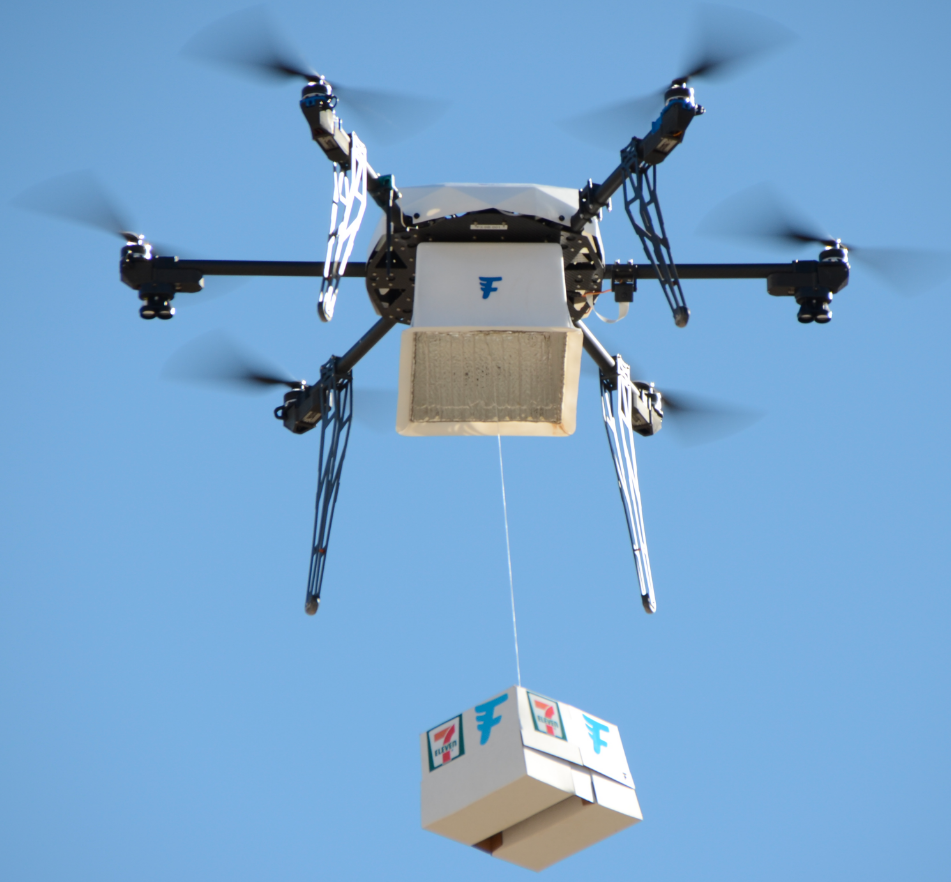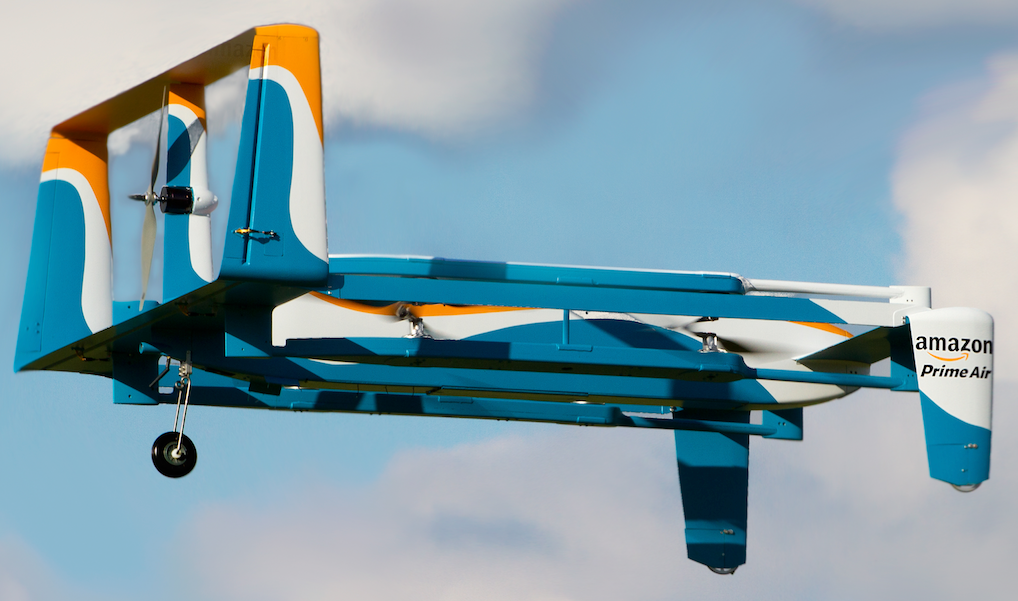Flirtey drone delivers Reno 7-Eleven slurpies in first commercial drone delivery to a residence
July 27, 2016

Flirty 7-Eleven delivery (credit: Flirtey)
Drone delivery service Flirtey completed the first FAA-approved autonomous drone delivery to a customer’s residence on July 22, ferrying sandwiches and Slurpees from a 7-Eleven in Reno, Nevada.
The two companies plan to expand drone delivery tests in Reno and expect drone packages to include “everyday essentials” such as batteries and sunscreen in the future, according to 7‑Eleven EVP Jesus H. Delgado-Jenkins.
Flirtey previously conducted the first FAA-approved drone delivery last July, a series of urgent medical deliveries to a rural healthcare clinic. The company also completed the first fully autonomous, FAA-approved urban drone delivery in the U.S. on March 25 to an uninhabited residential setting in Hawthorne, Nevada. The package included bottled water, emergency food, and a first aid kit.
And in June, Flirtey performed the first drone delivery of stool, blood, and urine samples from land to a medical testing facility on a barge in New Jersey’s Delaware Bay. Johns Hopkins University researchers on the barge sent back water purification tablets, insulin and a First Aid kit back to shore.
Amazon Prime Air testing moves to the UK

Amazon Prime Air’s new drone design, now being tested in the UK (credit: Amazon)
Meanwhile, hampered by the FAA’s strict new requirement* that commercially operated drones must fly within the operator’s line of sight at all times, on Monday July 25, Amazon.com Inc. announced plans for a partnership with the UK Government to make the delivery of parcels (up to 5 pounds to customers in 30 minutes or less) by Amazon’s planned Prime Air delivery service a reality.
Supported by the UK Civil Aviation Authority (CAA), Amazon now has UK permissions to “explore beyond line of sight operations in rural and suburban areas, test sensor performance to make sure the drones can identify and avoid obstacles, and [for] flights where one person operates multiple highly-automated drones.”
* According to an FAA announcement June 21 of the first operational rules for “unmanned aircraft drones weighing less than 55 pounds that are conducting non-hobbyist operations … pilots must “keep an unmanned aircraft within visual line of sight. Operations are allowed during daylight and during twilight if the drone has anti-collision lights. The new regulations also address height and speed restrictions and other operational limits, such as prohibiting flights over unprotected people on the ground who aren’t directly participating in the UAS operation.”
The FAA notes that “according to industry estimates, the [new] rule could generate more than $82 billion for the U.S. economy and create more than 100,000 new jobs over the next 10 years.”
Flirity | Flirtey making history with the first U.S. drone delivery (demo)